An adjective is a word that describes a noun or pronoun. Adjectives can describe how much, how many, what color or number. Adjectives can make a reading more interesting because they bring description to the noun. Our adjective worksheet sub-topics include; regular adjectives, comparative and superlative adjectives, and adjectives or adverbs.
Adjectives are describing words that are vital to making a student's piece of writing more interesting and engaging for the reader. This collection of teaching resources includes games, posters, worksheets and activities to use in your primary school classroom when learning about this fundamental part of speech. In this adjectives lesson plan, students will learn what adjectives are and will learn adjectives to describe objects and to describe people. Once students have an understanding about what adjectives are and have learned some adjectives, they will play 2 fun activities and complete an adjectives worksheet. This adjectives lesson plan is ideal for teaching adjectives in English to kids and beginner English language learners.
All the materials needed for this adjectives lesson plan are included below. Our printable adjectives and adverbs worksheets with answer keys provide stacks of practice exercises in telling adjectives and adverbs apart. While an adjective describes a noun, an adverb modifies a verb, adjective, another adverb, or a complete sentence. Add more nuance and specificity to your adjective-adverb practice with our free adjectives and adverbs worksheet pdfs. This lesson plan provides students with the opportunity to learn, revise and practice the use of nouns, verbs and adjectives in their writing.
This lesson was originally created for a year 3 class, however is easily adaptable for children in Years 2 to 4, and beyond if appropriate. An adjectives lesson plan for kids can be a wonderful resource for busy teachers in search of unique learning activities. Get adjective lesson plans for lower and upper elementary students along with resources to use in your classroom to teach adjectives. Children often already have a basic grasp of using adjectives without realising it. This helps your child begin to use descriptive and referential use of adjectives - as they may have already been doing. This unlocks more adjectives that work in the present tense, and it's a great place to begin unlocking further descriptive language.
Third graders should know the general function of adjectives and how to properly use them in a sentence. This year, they begin to learn the specifics of comparative and superlative adjectives. A comparative adjective compares two subjects and typically ends in –er.
Superlative adjectives are used when comparing more than two objects and usually end in –est. There are many tools in the Learning Library that center on these concepts. All of the effective academic lessons are developed by professional teachers and are carefully selected. Depending on time, children could then choose another 3 word cards randomly and complete the same activity with minimal assistance. The teacher may choose with a support group at this stage, while the more capable students work independently. Students write their 3 words in the correct column in their books, then write a sentence using the words they chose.
Our year four adjectives worksheets involve both reading and writing activities. This involves being able to classify adjectives correctly, transforming adjectives into nouns, and being able to identify the use of adjectives in the grander form. We also discuss and practice increasing vocabulary so that adjectives are always fresh and exciting.
Adjective practice at the third grade level includes an introduction to superlative and comparative descriptors. These third grade adjective resources dig into this new layer of adjectives while continuing to boost students' language proficiency. Next, it's time for students to learn more adjectives and to practice writing adjectives with this worksheet. Print out this adjectives worksheet and give one to each student. To complete the worksheet, students should look at the picture and choose the best adjective to describe it from the box at the top. For students who finish the worksheet early, why not ask them to make a full sentence with the adjectives on the worksheet.
Check out our adjectives worksheet page for more free adjective worksheets. Turtle Diary's adjective worksheets are great practice for kids learning parts of speech. They will master the difference between adjective and adverbs by being challendged to differentiate examples of the two using our adjectives practice worksheets. Who said the adjective-adverb learning is a hard slog!
Simply find out if it's the noun or verb that's awaiting its descriptive word. Complete the sentences with correct adjectives and adverbs from the box. No grade 2 or grade 3 kid should take adjectives and adverbs for granted! Instruct kids to read each sentence, focus on what the underlined word modifies, and write if it's an adjective or adverb. Unlike nouns and verbs, the types of adjectives are not as strictly defined.
What Is A Noun Year 3 For this reason, style guides and grammar resources may not consider some of the types of adjectives you are about to learn about to actually be adjectives at all. While we will treat these words as adjectives, you shouldn't be surprised if you see them referred to as a different part of speech. A fun way to warm up the class and introduce the concept of adjectives is to draw a silly face on the board.
Draw a face with big head, small eyes, big ears, a small nose, etc. Next, ask students questions about the silly face to elicit some adjectives. For example, you can point to the eyes and ask "Does he have big eyes or small eyes? Do the same for the other parts of the face and elicit more adjectives. Next, do the same with other objects around the classroom. For example, you can pick up a blue pen and ask students "Is it red or blue?
Once you have practiced enough, briefly explain to students that these words that describe things are adjectives, and they are the words you will be learning today. Many languages have special verbal forms called participles that can act as noun modifiers . Sometimes participles develop into pure adjectives. Many languages distinguish between adjectives, which qualify nouns and pronouns, and adverbs, which mainly modify verbs, adjectives, or other adverbs. Not all languages make this exact distinction; many have words that can function as either. For example, in English, fast is an adjective in "a fast car" but an adverb in "he drove fast" .
Flash forward your practice with this sure-to-excite adjectives and adverbs worksheet pdf for grade 4! Identify and underline the adjective in the first sentence. Add -ly to the adjective and form the adverb to complete the second sentence. Watch the aspiring adjective and adverb scholars in 4th grade feast on the sumptuous practice here! Figure out if the underlined words in sentences are adjectives or adverbs and check the correct boxes. The final activity in this adjectives lesson plan is a fun adjectives quiz.
There are 10 questions and each question will show students a picture and a sentence with the adjective missing. Students should choose the best adjective to complete the sentence. You can also find complete this adjectives quiz online.
Third grade is an integral year of elementary school. Students use the skills they have learned in kindergarten, 1st and 2nd grade to develop stronger reading comprehension and writing skills. Properly teaching grammar skills is the key to improving 3rd graders' academic abilities. Teachers and parents can make sure that students master Common Core-aligned 3rd grade grammar skills with a quick overview and free worksheets. Year six adjective worksheets and onwards is when children should start to write and to make evidenced points in their schoolwork.
Our adjective worksheets help curate this ability by teaching and practicing conjunctions to connect sentences together and help them flow more appropriately. This gives your child the chance to make their writing stronger, more readable, and more convincing. One of my favorite adjective activities is a Book Hunt.
Students can grab books from the shelves and find as many adjectives as they can! Moreover, this activity can be modified for any type of learner and can be repeated over and over! As you can see in the activity above, students could either create a continuous list of all adjectives used or track adjective phrases on sticky notes. Give out the "Adjectives & Comparatives Pictures" worksheet to each student. In this lesson, students practice using common adjectives to describe objects and then make comparisons using comparative adjectives. They play comparison games and complete a comparisons worksheet.
Limiting adjectives are adjectives that restrict a noun or pronoun rather than describe any of its characteristics or qualities. Limiting adjectives overlap with other types of adjectives such as demonstrative adjectives and possessive adjectives. Limiting adjectives include words such as these, your, and some. Once students have practiced enough, it's time to do a fun activity to practice some more. Choose one of the flashcards without showing the students, and then act out the adjective which is on the card.
Ask students to try to guess what adjective you are portraying. Once a student guesses correctly, invite that student to come and choose the next card and act it out. This activity is great way to encourage students to recall the adjectives that they just learned. This involves the classification of adjectives as well as how they can be used to make more convincing writing, particularly in essay contexts. Advanced comparatives and superlatives are also introduced throughout, giving your child the correct framing they need to move into Key Stage 3 with confidence in their literacy output. A fun activity to use when learning about nouns, verbs, adverbs and adjectives.
Mixed Parts of SpeechOn these worksheets, students practice identifying the correct part of speech for specific words in sentences. Predicate adjectives are adjectives that appear in the predicate of a sentence as a subject complement rather than directly next to the nouns or pronouns that they modify. Predicate adjectives follow linking verbs in sentences and clauses.
Now that students have an understanding of what they will learn today, it's time to introduce the new adjectives that they will learn. Show students these flashcards, or make your own, and ask students to repeat after you. Next, ask students to say each word on their own. Once students have practiced saying the adjectives enough, practice making full sentences using the adjectives. For example, "He is strong.", "They are young.", etc.
Students who confidently used nouns, verbs and adjectives and were able to write creative sentences using their chosen words . There are a few ways to do this fun game that can be played in a group or during quiet time. Teachers can print out samples from student's favourite stories or write them on the board. Encourage students to read through the story, circling adjectives as they go. The best thing about this exercise is its versatility, easily slipping into any lesson plan.
When it comes to teaching adjectives, it's easy to get burnt out on finding something new. Use these engaging lesson plans and resources to add a bit of sparkle to your English lessons. With adjectives under your belt, dive into the wonderful world of preposition examples.
Adjectives are a useful, descriptive and often fun element of writing about and referring to the world around us. It's important for children to learn about their function, when to use them, and how to sprinkle them into writing in a manner that is both relevant and useful. Too many adjectives can be overwhelming, while too few can make written text feel bland, a balance that is discussed more throughout our adjective topic resources. Our English worksheets cover all the important topics your child will need throughout their school career. Use this resource to practice close reading in a fictional text. Your students will look at the adjectives, adverbs, and verbs that give more details about the important story elements.
Use this resource to give your students practice categorizing words into different parts of speech. They will identify words as either adjectives, adverbs, or verbs. An adjective acts as the head of an adjective phrase or adjectival phrase .
In English, attributive adjective phrases that include complements typically follow the noun that they qualify ("an evildoer devoid of redeeming qualities"). One way this happens is by eliding a noun from an adjective-noun noun phrase, whose remnant thus is a nominalization. In the sentence, "I read two books to them; he preferred the sad book, but she preferred the happy", happy is a nominalized adjective, short for "happy one" or "happy book".
Another way this happens is in phrases like "out with the old, in with the new", where "the old" means "that which is old" or "all that is old", and similarly with "the new". In such cases, the adjective may function as a mass noun . It is important to notice the difference between an adjective and adverb.
These Adjectives or Adverbs worksheets are for students at the beginner and intermediate level. Once the time is up, get all the students to sit down in their groups. Ask different students to bring up the objects with their word cards and place them prominently at the front of the class (e.g. on a table). For each object, give a point to the team with the correct word card (e.g. a long pencil with the word card "long").
If there are any objects without a correct word card, teach the word for that object. A great way to review any lesson about adjectives is to ask students to use what they have learned to describe objects in the classroom. Ask students to line up at the door and before they leave, show each student an object and ask them to make a sentence describing that object in English. Please enjoy this free worksheet on comparative adjectives. This will help students practice writing adjectives in the proper comparative form. This worksheet is included in my product Comparing Adjectives.






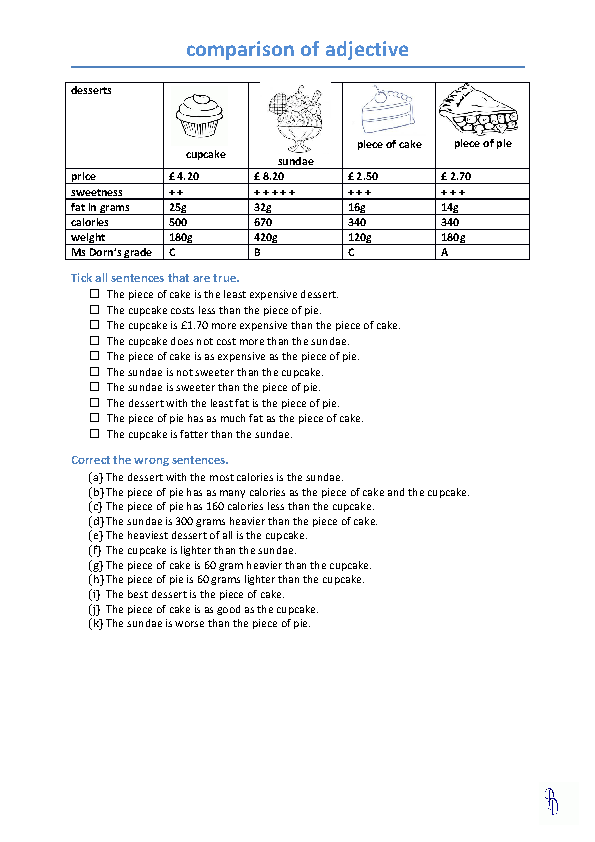

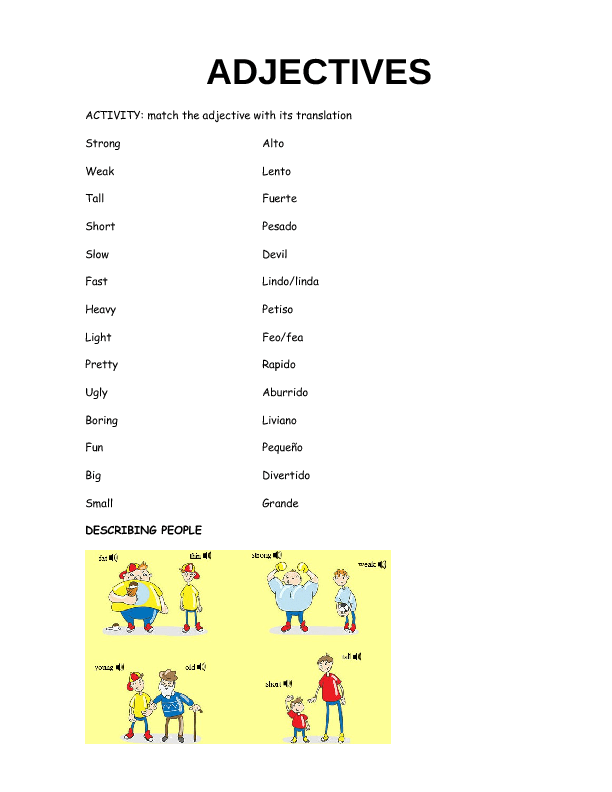





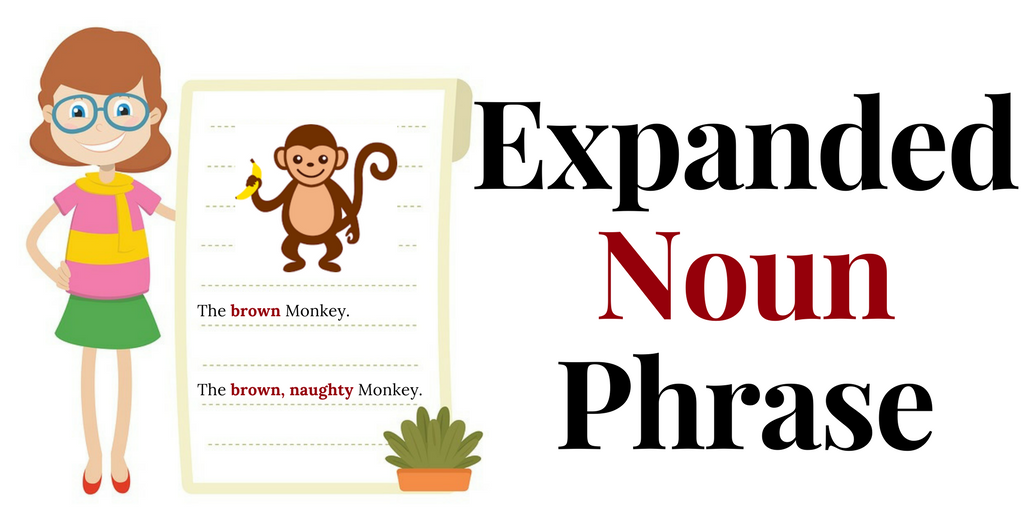



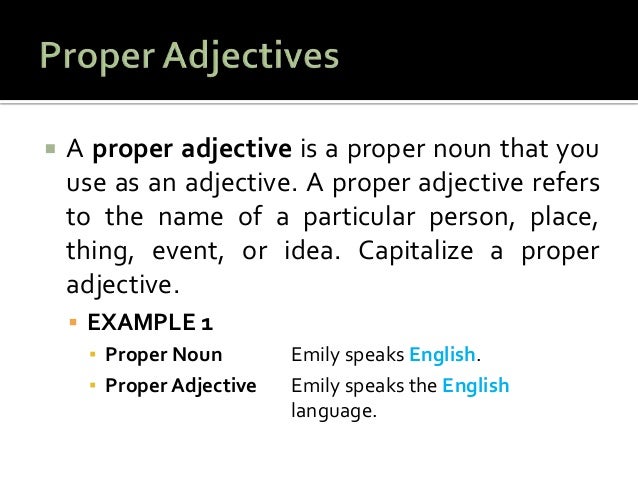






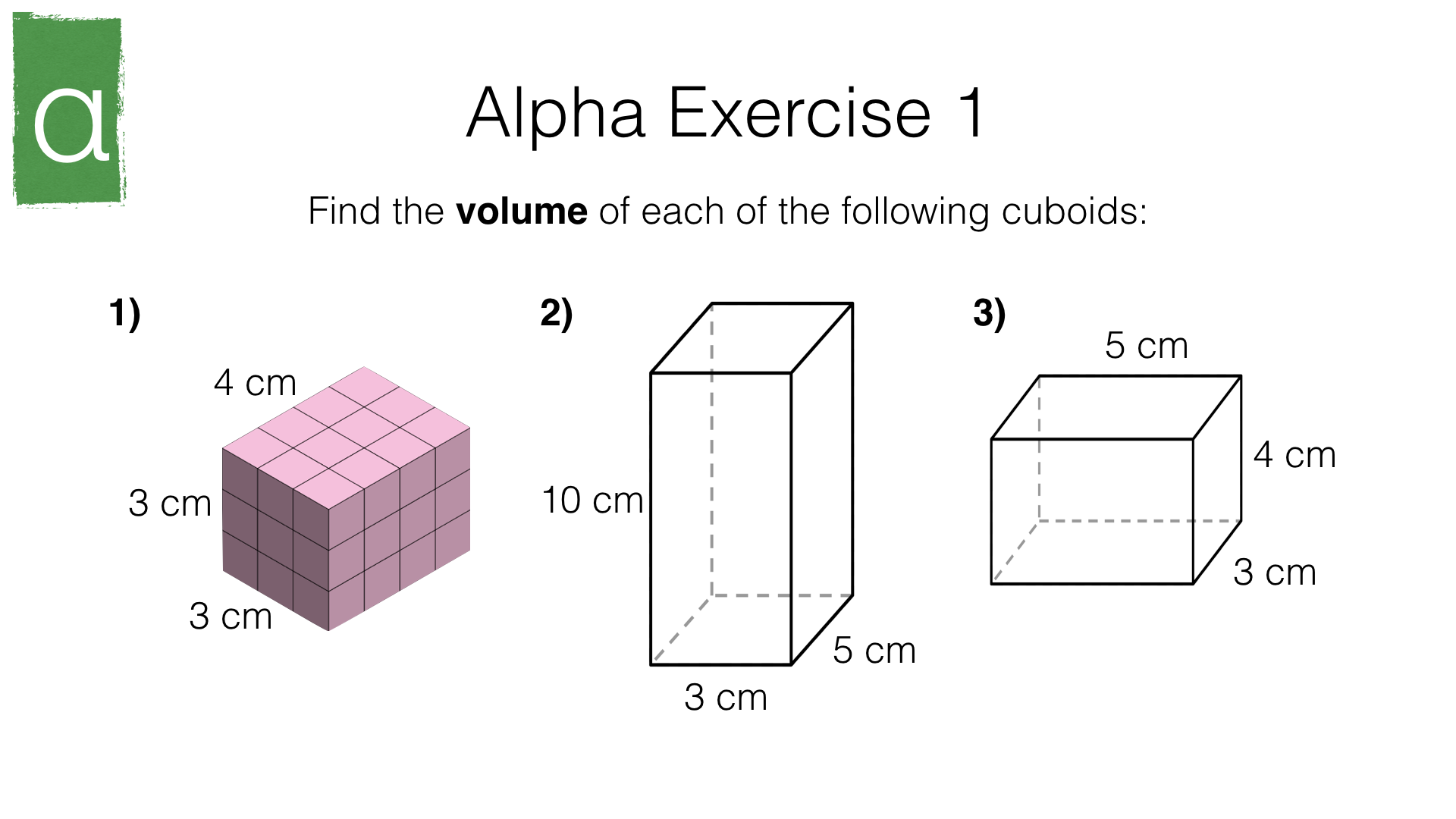
No comments:
Post a Comment
Note: Only a member of this blog may post a comment.